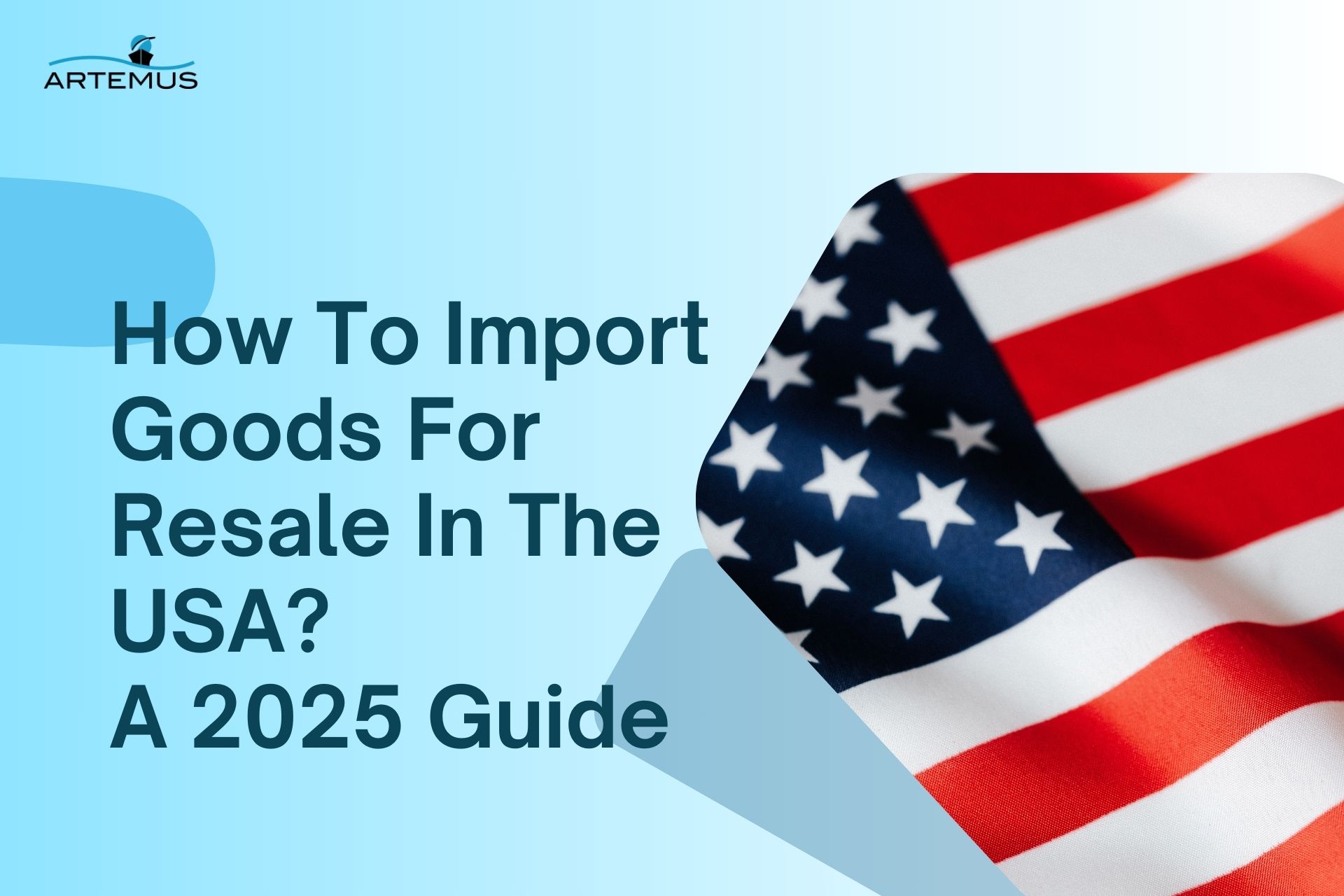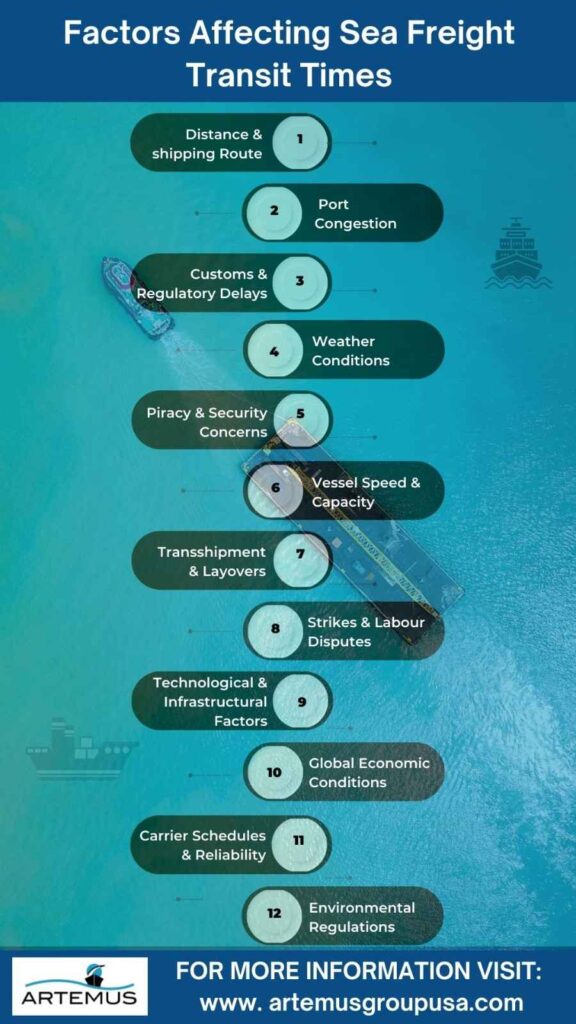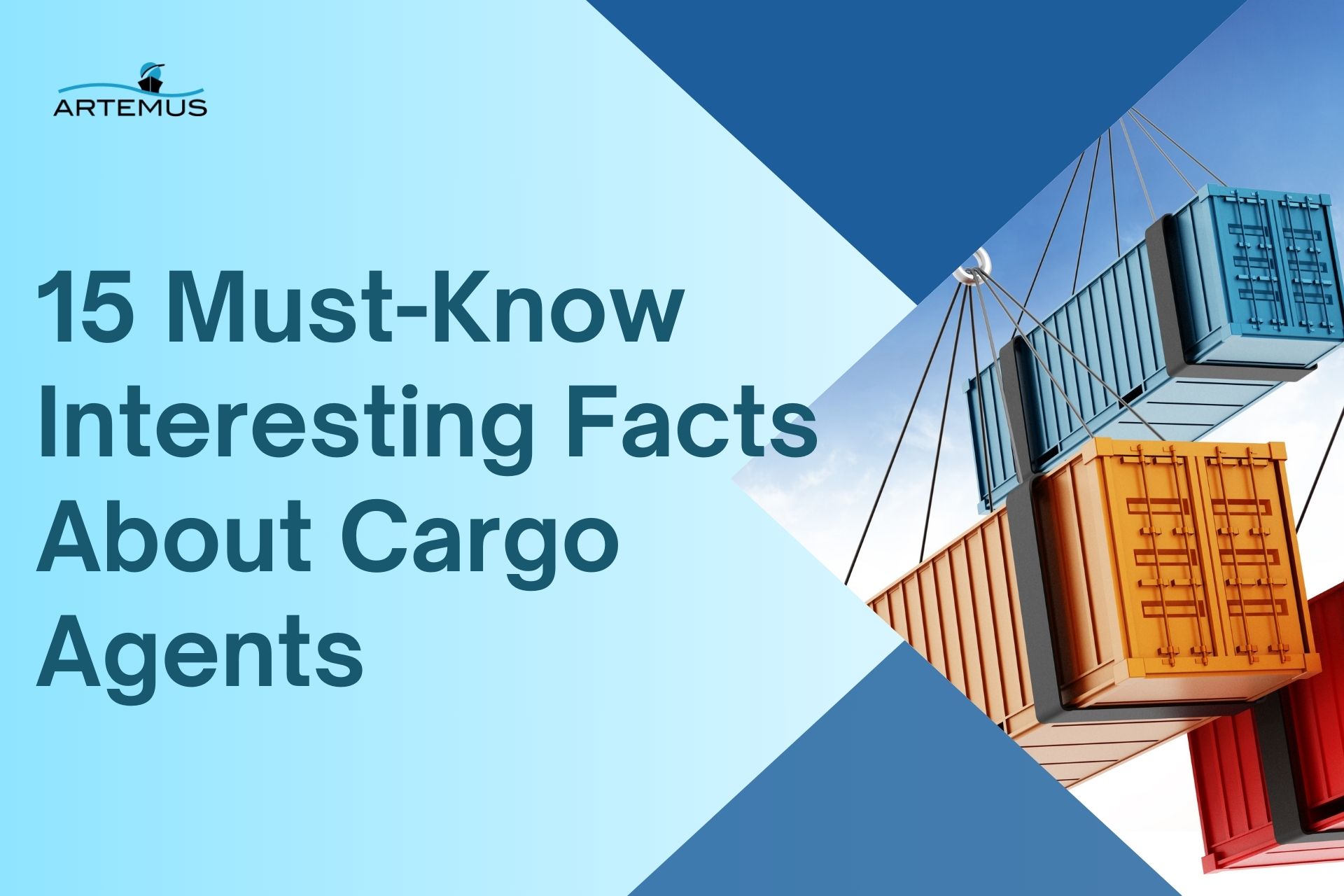
How To Import Goods For Resale In The USA? A 2025 Guide
Importing goods for resale in the USA presents a lucrative business opportunity, but navigating the complexities of U.S. customs regulations,

Understanding the duration of sea freight shipments from China holds significant importance for businesses engaged in global trade. Accurate knowledge of transit times allows companies to plan their supply chain logistics effectively, ensuring timely delivery of goods to their destinations.
However, navigating the complexities of international shipping, including compliance with regulatory requirements, can be challenging. This is where solutions like Artemus’s ISF and AMS software come into play, offering essential support in ensuring seamless and compliant cargo movement.
By leveraging these software solutions, businesses can streamline their shipping processes, mitigate risks of delays and penalties, and ultimately enhance their overall operational efficiency.
Table Of Contents
Sea freight from China to the USA typically takes between 15 to 30 days, depending on various factors such as the specific ports of departure and arrival, the shipping route, and the type of service, whether it is direct or involves transshipment.
For instance, shipments from major Chinese ports like Shanghai or Shenzhen to West Coast ports in the US, such as Los Angeles or Long Beach, usually take around 15 to 20 days.
In contrast, deliveries to East Coast ports, such as New York or Savannah, often take 25 to 30 days due to the longer distance and the possibility of transiting through the Panama Canal. Seasonal demand, weather conditions, and customs processing can also influence the transit time.
Related: How Long Does Sea Cargo Take? What To Expect

Sea freight transit times are influenced by a multitude of factors that can impact the efficiency and reliability of shipping goods across oceans. Understanding these factors is essential for businesses and logistics managers aiming to optimize their supply chain operations.
Here are some of the primary factors affecting sea freight transit times:
The most straightforward factor is the physical distance between the port of origin and the port of destination. Greater distances inherently lead to extended transit times. Additionally, the specific shipping route chosen can affect the time; some routes may have faster currents or fewer obstructions, while others may be longer but avoid risky areas.
Congestion at ports can significantly delay sea freight. Busy ports with high volumes of cargo traffic often face bottlenecks, causing ships to wait longer for docking and unloading. This is especially common in major global ports such as Los Angeles, Shanghai, and Rotterdam.
Customs clearance procedures at both the departure and arrival ports can lead to delays. The complexity and thoroughness of inspections, the efficiency of the customs officials, and any issues with documentation can all impact how quickly a shipment moves through customs.
Adverse weather conditions such as storms, hurricanes, and rough seas can severely impact sea freight transit times. Ships may need to alter their routes or wait out bad weather, causing delays. Seasonal weather patterns also play a role, with certain times of the year being more prone to disruptions.
Certain regions of the world, such as the Gulf of Aden, are known for piracy risks. Ships may take longer, safer routes to avoid these areas or might require escorting by security forces, both of which can extend transit times.
The speed of the vessel itself is a significant factor. Modern container ships travel at different speeds, and a ship traveling at a slower speed will obviously take longer to reach its destination. Additionally, larger ships carrying more cargo may have to adhere to slower speeds for safety and fuel efficiency.
If the shipment involves transshipment, where cargo is transferred from one vessel to another, this can add to the transit time. The efficiency of the transshipment port and the synchronization of the connecting vessels are crucial in minimizing delays.
Labor strikes and disputes at ports can halt operations and significantly delay cargo handling and processing. These disruptions can affect transit times unpredictably and often require rerouting of shipments to alternative ports.
The level of technology and infrastructure at the ports involved also plays a role. Ports equipped with advanced handling equipment, automated systems, and efficient logistics networks can process cargo much faster than those with outdated or inadequate facilities.
Economic factors such as fuel prices, shipping demand, and global trade policies can influence transit times. For example, high fuel costs might lead to slower sailing speeds to conserve fuel, while trade wars and tariffs can cause backlogs and rerouting of shipments.
The schedules and reliability of the shipping carrier are also critical. Some carriers may have more frequent sailings and better on-time performance records than others. Choosing a reliable carrier with a well-maintained fleet can help in achieving more predictable transit times.
Stricter environmental regulations, such as the International Maritime Organization’s (IMO) sulfur cap on marine fuels, can influence shipping operations. Compliance with these regulations often requires adjustments in sailing speed or routes, potentially affecting transit times.
Related: How To Import A Car From Japan To USA? A 7-Step Process
Common sea freight routes from China to the USA involve several key ports on both sides, facilitating the flow of goods across the Pacific Ocean.
Shanghai: As the busiest container port in the world, Shanghai is a central hub for sea freight, handling a vast array of goods destined for the USA. Its advanced facilities and strategic location make it a preferred departure point.
Shenzhen: Known for its proximity to major manufacturing hubs, Shenzhen’s port is highly significant in the export of electronics and other goods. It is one of the largest and most efficient ports in China.
Ningbo: This port is renowned for its deep-water berths, allowing it to accommodate the largest cargo ships. Ningbo is a critical gateway for exports, particularly for goods produced in the eastern provinces.
Qingdao: Serving the northern regions of China, Qingdao is another major port with extensive shipping lines connecting to the USA. It handles a diverse range of commodities, from industrial products to consumer goods.
Los Angeles: The Port of Los Angeles is the busiest container port in the United States, handling a significant portion of imports from China. Its advanced infrastructure supports the efficient handling and distribution of goods.
Long Beach: Adjacent to Los Angeles, the Port of Long Beach is another key entry point for Chinese goods. It offers extensive logistics capabilities and connectivity to inland transportation networks.
New York/New Jersey: The Port of New York and New Jersey is the main gateway for goods entering the eastern United States. It provides robust facilities and services for handling large volumes of cargo.
Savannah: Known for its strategic location and efficient operations, the Port of Savannah is a major hub for distributing goods throughout the southeastern and midwestern United States.
Related: How To Import From China To USA In 2024: Process & Costs
Estimated transit times for sea freight from China to the USA vary depending on the specific routes and ports involved.
This route typically takes about 13 to 15 days, benefiting from direct shipping lines and the high volume of traffic between these two major ports.
Transit times for this route are generally around 25 to 30 days. The longer duration is due to the extended distance and often includes a transshipment point, possibly through the Panama Canal.
Shipments on this route usually take approximately 25 to 28 days. The distance and the complexity of navigating through the Gulf of Mexico contribute to the transit time.
Routes such as Qingdao to Seattle or Guangzhou to Miami vary, with typical transit times ranging from 20 to 35 days depending on the specific ports and shipping lines used. Factors like weather conditions, port congestion, and customs clearance can further affect these estimates.
Related: Top 10 Items Exported From India To USA: A 2024 List

Artemus offers a robust compliance support system with its ISF (Importer Security Filing) and AMS (Automated Manifest System) software solutions, designed to streamline and simplify international shipping processes.
By automating the submission of essential documentation required by U.S. Customs and Border Protection, Artemus ensures timely and accurate filings, reducing the risk of delays and penalties. The user-friendly software integrates seamlessly with existing logistics operations, and provides real-time tracking and updates, enhancing overall efficiency and compliance.
Related: Poland’s Exports To USA: The Complete List For Opportunities
Sea shipping from China to the USA typically takes between 15 to 30 days, depending on the specific ports and shipping routes involved.
Sea freight usually takes between 15 to 45 days, depending on the distance, shipping route, and specific ports involved.
Sea shipping is generally slower compared to air shipping, taking weeks instead of days to reach its destination.

In conclusion, understanding the time sea freight takes from China is essential for effective logistics planning. Factors like shipping routes and customs processes influence transit times. By staying informed, businesses can ensure timely delivery of goods, optimizing their supply chain operations for success.
Related: Exporting Mangoes From India To The USA: How To Ship?

Importing goods for resale in the USA presents a lucrative business opportunity, but navigating the complexities of U.S. customs regulations,

Cargo agents are the backbone of the global logistics and shipping industries, managing the complex web of tasks that ensure

Ocean container dimensions are essential for efficient global shipping, ensuring that goods are transported safely and cost-effectively. Understanding container sizes,
Get In Touch
Artemus’ Software Solutions for ISF, AMS, Japan AFR, eManifest Canada, & Panama B2B filings.